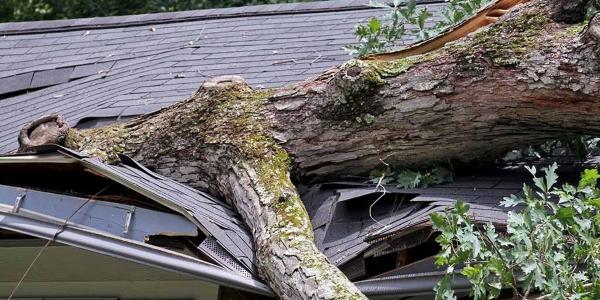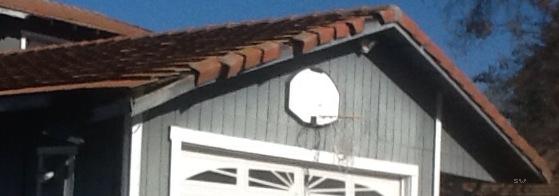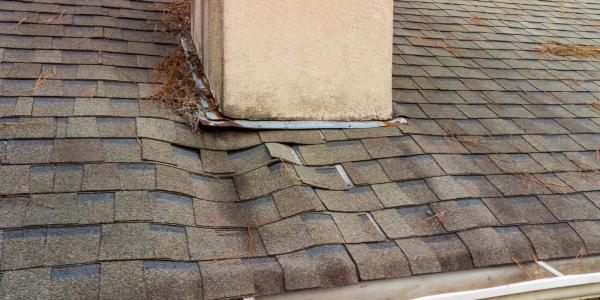Tree management 101: We’re yelling timber!

By Connor Amann, Gunner Roofing.
Keep your roof safe while still enjoying the beauty of trees with these management tips!
Trees offer a multitude of benefits to a property, including aesthetic beauty and environmental benefits such as providing habitat for wildlife and shade for cooling. However, having trees on your property also poses a series of management challenges to keep them from threatening the safety of your home. This include preventative strategies like regular trimmings and bringing out arborists to inspect the tree’s health. By taking the time to invest in methods like these, you can relax in the shade of a tree and minimize the risk to your home. But even with the most careful preventative care, there can be storms, accidents and unexpected twists, which is why Gunner Roofing is not only sharing expert tips on how to care for trees, but also covering what to do in the aftermath of a tree falling on your roof.
The importance of tree trimming
Preventing tree damage to your roof is essential for maintaining its structural integrity and ensuring the longevity of your home. Overhanging branches, when swayed by wind, can lead to significant abrasion on roofing materials, including asphalt shingles. This contact can scratch, gouge and strip protective granules from the shingles, exposing the underlying materials to water infiltration and UV damage. Over time, this continuous impact may cause shingle damage, leading to roof repairs or premature roof replacement due to the damaged shingles.
To mitigate these risks, it’s crucial to maintain a safe distance between trees and the roof, ideally keeping tree branches at least 10 feet away. This precaution ensures that even during storms, branches are less likely to cause damage to your roof, helping to preserve the roofing materials’ integrity.
Trees close to your house are a primary source of debris, such as leaves, pine needles, twigs and other natural litter, accumulating on your roof and in your gutters. This accumulation can impede water runoff, leading to potential leaks, mold growth and deterioration of both roofing materials and the roof’s structure. Regular tree trimming minimizes the volume of tree debris falling onto the roof and is a proactive step to prevent roof damage. Furthermore, installing gutter guards and cleaning your gutters regularly are essential measures to maintain water drainage and protect your roof year-round.
Moreover, overhanging branches can facilitate moisture retention and pest infestations. Branches that touch or hang over the roof can give pests easy access to your home and trap moisture against the roofing surface, fostering the growth of moss, algae and lichen. These can cause structural damage, create pathways for water ingress and degrade roofing materials over time. Trimming these branches is vital to limit moisture and deter pests, helping to maintain the tree’s health and prevent tree damage to the roof.

Best practices for tree maintenance
Regular inspections by a certified arborist are essential for ensuring tree health and safeguarding your property from potential tree damage to your roof. Arborists are equipped to identify signs of disease, pest infestations and structural issues in trees that might not be obvious to homeowners. By detecting problems early, such as fungal infections or internal rot, arborists can prevent the risk of tree branches or even an entire tree falling, which could cause significant roof damage or structural damage to your home or neighbor’s property.
This preventive strategy is particularly crucial as a storm approaches, when unstable trees or large branches are more likely to break and fall, potentially leading to a fallen tree on your house. Early intervention, such as treating diseases or removing hazardous limbs, can drastically reduce the risk of damage to your roof and ensure the structural integrity of your home remains intact.
Proper trimming techniques play a vital role in maintaining the tree’s health and preventing tree damage. Avoid practices like topping, which can stress trees and lead to weak growth patterns, making them more susceptible to storm damage. Instead, focus on removing dead or diseased limbs, thinning dense foliage to allow for better light and air penetration and cutting back overhanging branches that pose a threat to your roof. This approach not only helps maintain the natural form of the tree but also reduces the likelihood of damage to your asphalt shingles or other roofing materials during high winds or storms.
When it comes to planting new trees, consider their mature size and root system to prevent future roof damage. Large trees should be planted at a safe distance from your home, ideally at least 20 feet away, to minimize the risk of tree debris like pine needles, leaves or other litter accumulating on your roof or clogging your gutters. Choosing tree species with strong wood and deep root systems can further protect your property from storm damage. Additionally, installing gutter guards can help manage water runoff and prevent blockages from tree debris, protecting your roof year-round.

What to do if a tree falls on your roof
In the event of tree damage to your roof, it’s imperative to prioritize safety first. Should a tree fall on your roof, causing structural damage or even if an entire tree falls, the immediate step is to ensure everyone in the household is safe and to refrain from entering areas compromised by the fallen tree or tree branches. This kind of incident, where tree limbs or large branches cause damage, highlights the importance of a swift and informed response.
The next course of action involves contacting professionals who are adept at handling such emergencies. Engaging a reputable roofing company is crucial for assessing the roof damage and implementing temporary solutions to protect your home from water ingress. Concurrently, reaching out to a certified tree expert or arborist is essential for the safe removal of the tree debris, a fallen tree or any unstable trees that pose further risks to your property. This dual approach ensures both the immediate and underlying issues are addressed, safeguarding your home’s structural integrity and preventing more damage.
Documentation of the damage is a critical step, not to be overlooked. Capturing photos and compiling a detailed list of the damage caused by the tree fall – including any damaged asphalt shingles or other roofing materials – serves as vital evidence for insurance purposes. This thorough documentation aids in the smooth processing of your insurance claim, helping to determine the extent of roof repairs needed.
Working closely with your insurance company post-incident is essential. Contacting your insurance agent promptly to report the tree damage enables them to guide you through the claims process efficiently. Insurance companies typically cover tree damage to roofs, including storm damage or damage from overhanging branches, ensuring homeowners receive the necessary funds for roof repairs and to have any structural issues rectified.
Finally, after the tree has been removed and the immediate threat to your home mitigated, it’s crucial to repair and take preventive measures against future incidents. Collaborating with a roofing company to address all the damage and complete the necessary repairs is vital. During this period, discuss installing gutter guards, maintaining a safe distance between large trees and your home and other preventive strategies to protect your roof from tree damage year-round. These measures not only aid in preventing roof damage but also contribute to the overall well-being of your property, ensuring your home remains safe and secure against the elements and potential tree-related hazards.
Original article source: Gunner Roofing
Have a question? AskARoofer.
Find your local roofing contractor in the RoofersCoffeeShop® Contractor Directory.









Comments
Leave a Reply
Have an account? Login to leave a comment!
Sign In